The Amazon Basin—spanning Brazil, Colombia, Peru and extending into Bolivia, Ecuador, Venezuela, Guyana, Suriname, and French Guiana—is one of Earth’s greatest biodiversity hotspots. Anchored by the mighty Amazon River, this region supports an astonishing web of life. Across studies, scientists estimate 100,000+ invertebrates, ~3,000 freshwater fish, ~378 reptiles, ~400 amphibians, ~427 mammals, and ~1,300 birds (figures vary by source, but all underscore its richness).
Below you’ll find 30+ emblematic Amazon wildlife species, with concise ID features, ecology, and conservation notes.
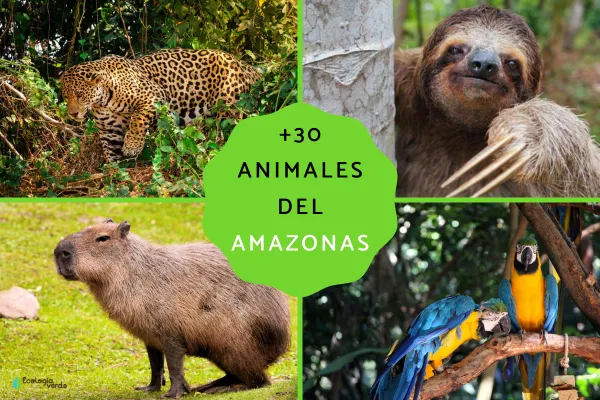
Jaguar
Three-toed sloth
Capybara
Toucans
Blue-and-yellow macaw
Amazon kingfisher
Green anaconda
Brown basilisk
Black caiman
Poison dart frogs (examples)
Representative Amazon fishes
More Amazon animals (mammals, birds, invertebrates)
The largest cat in the Americas and a top predator in Amazon forests and wetlands. Powerful build, rosetted coat, adept swimmer; diet ranges from caimans and turtles to deer.
Status: Near Threatened (NT); habitat loss and poaching are key pressures.

A canopy specialist with slow metabolism and low activity; often rests 15–20 hours/day. Greenish hue can come from algae and symbionts in fur; leaf-based diet.
Status: Generally stable, but illegal capture and habitat loss pose localized risks.
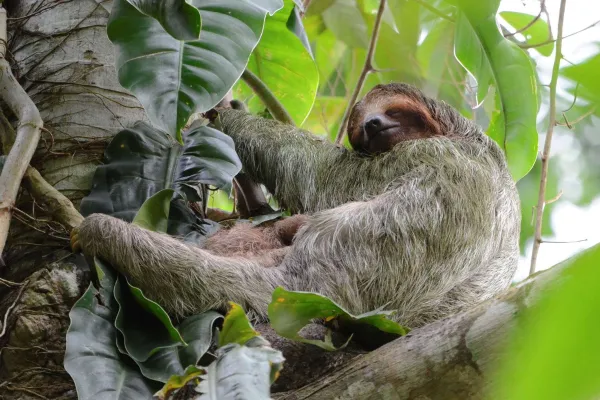
The world’s largest rodent (to ~1.5 m). Semi-aquatic and highly social, grazing near rivers and wetlands; excellent swimmers.
Status: Overall stable; local pressure from hunting and wetland drainage.
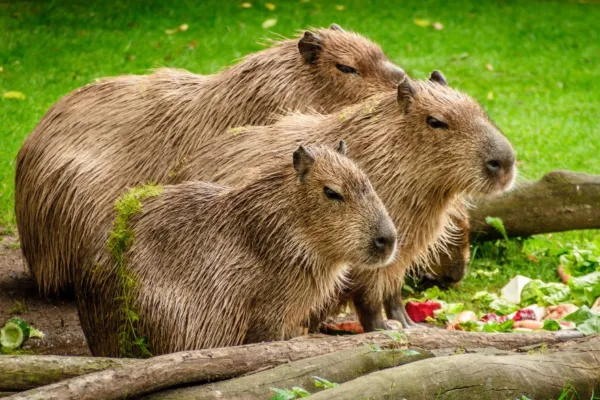
With huge down-curved bills and bold colors, toucans are icons of the rainforest canopy. Mostly frugivorous but opportunistic insectivores/small-vertebrate predators. Toco Toucan (Ramphastos toco) is the largest; many relatives are common across the Amazon.
Status: Often Least Concern, but dependent on mature forests and large cavity trees.
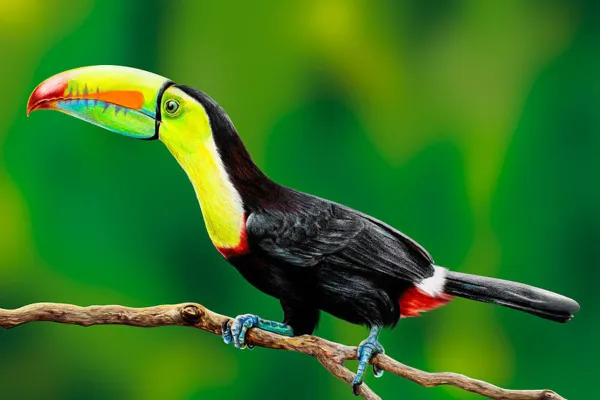
A famed large parrot—blue back, yellow underparts—living in pairs or small groups and often pair-bonded for life. Diet includes hard nuts and seeds.
Status: Least Concern, yet threatened by logging of nest trees and the illegal pet trade.

Small, brightly colored river hunter perching low over water and diving for fish.
Status: Generally stable; sensitive to riparian disturbance and water quality.
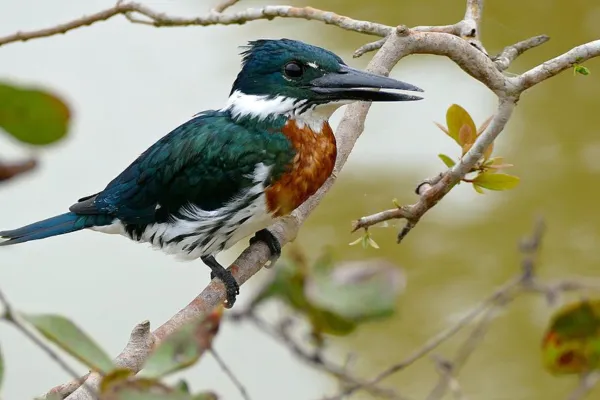
Among the heaviest snakes on Earth, lurking in still waters and floodplain marshes. A constrictor preying on capybaras, birds, fish, and caimans.
Status: Largely stable; wetlands conservation and avoidance of retaliatory killing are critical.
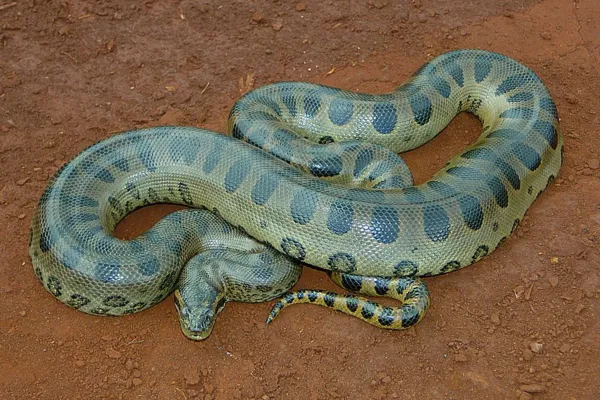
The “Jesus lizard” famous for running across water. Common along forested riverbanks and edges; sprints bipedally to escape predators.
Status: Low current risk; vulnerable to edge habitat degradation.
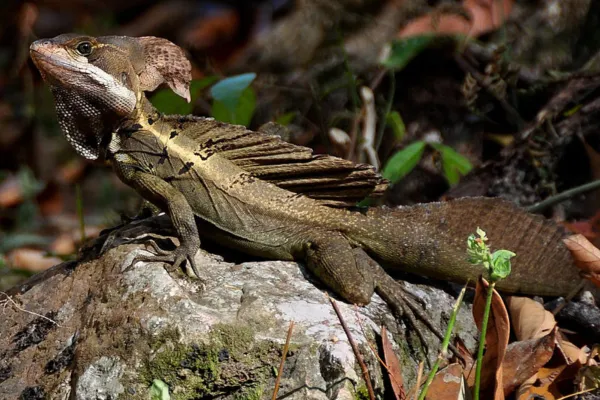
A top freshwater predator of the Amazon with near-black adult coloration. Larger and more territorial than many caimans; mostly nocturnal.
Status: Recovering in places after historic overhunting; habitat integrity remains essential.
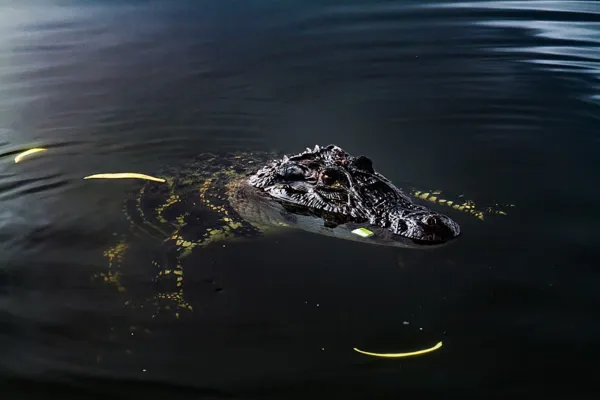
Golden poison frog (Phyllobates terribilis)
Bicolored poison frog (Phyllobates bicolor)
Bright aposematic colors warn of potent skin toxins; historically used by Indigenous hunters on blow darts.
Status: Threatened by habitat loss and illegal collection; strict protection needed.
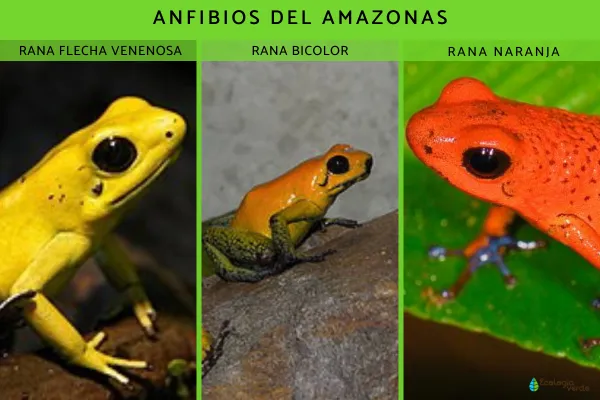
Electric eels (Electrophorus spp.)
Capable of strong electric discharges for hunting, navigation, and defense; prefer sluggish, turbid waters and swamps.
Piranhas (Family Serrasalmidae)
Triangular serrated teeth and strong bite; most are opportunists rather than indiscriminate attackers.
Arapaima (Pirarucu) (Arapaima gigas)
A freshwater giant that surfaces to breathe; culturally important fishery species—quotas and protected areas aid recovery.
Arowana (Silver arowana) (Osteoglossum bicirrhosum)
Elongate, surface-feeding predator that takes insects, fish, and small vertebrates.
Tetras (e.g., Hyphessobrycon herbertaxelrodi)
Small schooling fishes of clear/blackwater streams; a mainstay of the global aquarium trade (support captive-bred sources).
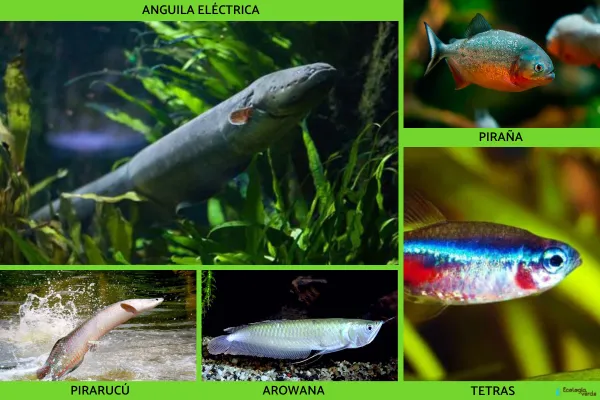
Giant otter Pteronura brasiliensis
Spider monkeys (e.g., Ateles belzebuth)—agile canopy acrobats
Howler monkey (Alouatta seniculus)—the rainforest’s dawn “alarm”
Emperor tamarin (Saguinus imperator)—noted for its “mustache”
Giant anteater (Myrmecophaga tridactyla)
Nine-banded armadillo (Dasypus novemcinctus)
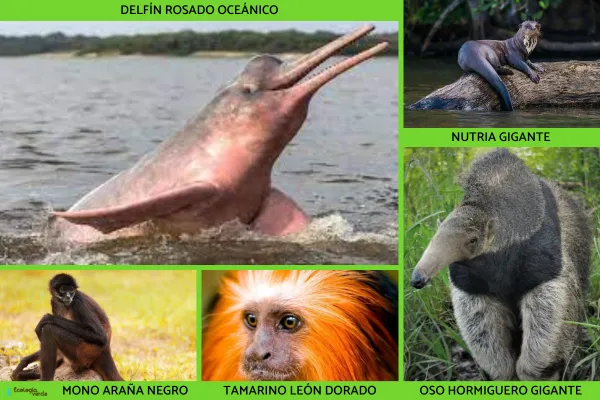
Hoatzin (Opisthocomus hoazin)—foregut fermentation; chicks have primitive-like wing claws
Wattled jacana (Jacana jacana)—long toes to “walk on lily pads”
Harpy eagle (Harpia harpyja)—one of the strongest rainforest raptors
Sunbittern (Eurypyga helias)—dramatic “eye-spot” wing display
Hyacinth macaw (Anodorhynchus hyacinthinus)—wider South American range, also present in Amazon; threatened by trade and nest-tree loss
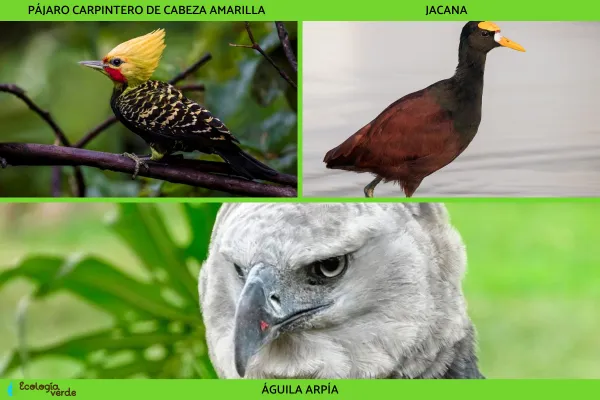
Blue morpho butterfly (Morpho menelaus)—structural iridescent blue
Owl butterflies (Caligo spp.)—huge “eye spots” on hindwings
Postman butterfly (Heliconius melpomene)—long courtship; larvae feed on passion vines
Goliath birdeater (Theraphosa blondi)—among the largest tarantulas
Army ants (Eciton burchellii)—mobile “living carpets”
Leafcutter ants (Atta / Acromyrmex)—fungus-farming “agriculturalists”
Titan beetle (Titanus giganteus)—a titan of tropical beetles
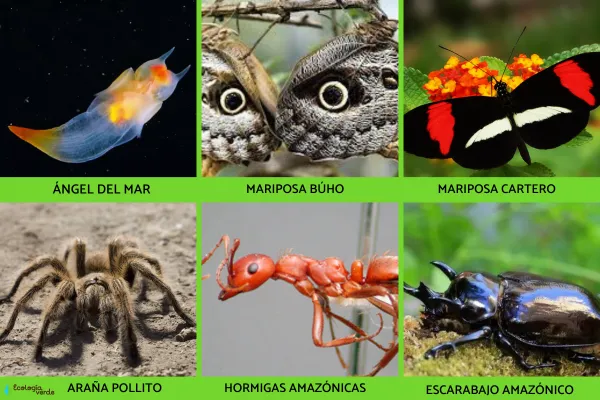
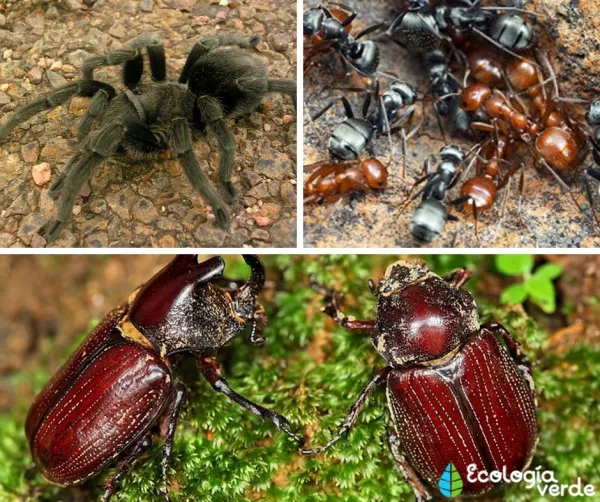
Notes: Distributions vary across the basin; common names can differ by country/language. Scientific names are included for clarity.
From apex predators like the jaguar and leviathans like the green anaconda, to brilliant parrots, morpho butterflies, and a profusion of freshwater fishes, the Amazon’s fauna powers the rainforest’s nutrient cycles and energy flow. Knowing these species is more than trivia—it’s a reminder that safeguarding continuous forest–river–wetland networks is the surest way to protect the beating heart of global biodiversity.
Bibliography
Harris, R. & Hutchison, P. (2011) Amazonas. Alhena Media & Brad Travel Guides Ltd., pp. 10–177.
Denevan, W. M. (1974) Development and the Impending Death of the Amazon Rainforest. Publication Series (Conference of Latin Americanist Geographers), Volume 3 (ISSUES IN LATIN AMERICAN DEVELOPMENT), pp. 73–79.
animal tags: animals amazon
We created this article in conjunction with AI technology, then made sure it was fact-checked and edited by a Animals Top editor.